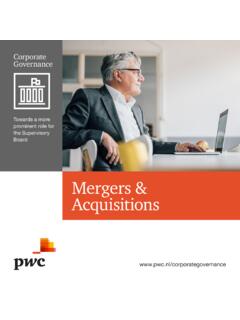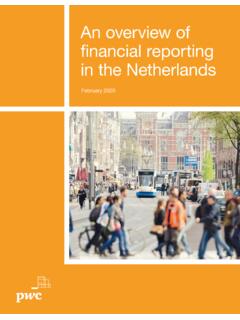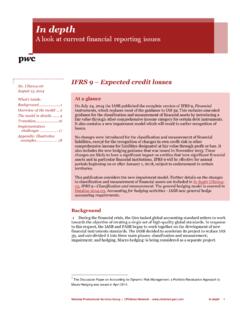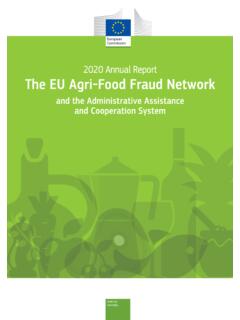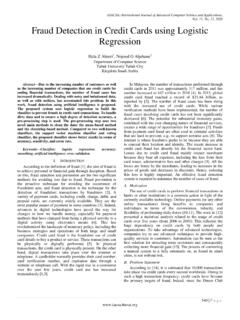Transcription of Food fraud vulnerability assessment - PwC
1 Food fraud vulnerability assessmentThink like a criminal to fight food fraud2 The war on food fraudFood fraud is a growing concern. Recent food fraud scandals have increased the need to protect consumers by strengthening the food industry s ability to detect and combat fraud within organisations and across supply risks have never been higher. While food fraud is not new, the criminal motivation to adulterate or counterfeit food for financial gain is growing and a new solution is needed to fight back. Current food safety management systems are not designed for fraud detection or mitigation, but new food safety guidelines require is why SSAFE has collaborated with PwC to create a food fraud vulnerability assessment that you can use free-of-charge to help identify your vulnerabilities to food fraud is an industry-led solution that supports the Consumer Goods Forum s Global Food Safety Initiative (GFSI) guidelines.
2 SSAFE developed the assessment with PwC, Wageningen University, VU University Amsterdam and in consultation with food industry leaders around the world to help put you in a stronger position to fight fraud . Want to assess your vulnerability to food fraud ? Go to now to download the assessment in Excel or online at The assessment will be available on the Apple App Store or Google Play from January your confidential, anonymous and free assessment of your food fraud vulnerabilities online tool helps food companies protect consumers by fighting fraud . As a non-profit organisation SSAFE believes that protecting consumers is vital. And by developing this free tool we hope to reduce criminal activity that adulterates food for economic gain. Quincy Lissaur, SSAFE3 Food fraud vulnerability assessmentWhat you don t know can hurt youCompanies are losing money and customers are losing faith.
3 Food fraud is estimated to cost the global food industry US$30 to $40 billion every beyond the economic cost, food fraud can lead to serious public health risks and damage brands. Food scandals, such as horse meat being passed off as minced beef in Europe and melamine being added to dairy products in China, have increased the urgency for the food industry to take and increasingly complex supply chains are creating huge opportunities and rewards for fraudsters. The collision of megatrends particularly climate change, resource scarcity, urbanisation and demographic change are increasing vulnerabilities and making it easier for criminals to profit from fraud . Today, even the most basic foods can involve huge numbers of suppliers around the wonder, then, that food fraud is response GFSI is adding two new requirements to its guidance document to support companies in reducing the risks from food fraud to their own organisation and consumers.
4 By requiring companies to assess their vulnerability to food fraud and develop control plans to reduce their vulnerabilities, fraud mitigation will become an integral part of food safety management systems and a company s enterprise risk management food fraud vulnerability assessment is purpose built to help companies identify areas of vulnerability and meet the requirements of all GFSI recognised certification schemes as well as several regulatory authorities around the world. It s a great place to start in identifying your vulnerabilities and planning your mitigation fraud is estimated to cost the global food industry US$30 to $40 billion every Spink, Michigan State University1 John Spink, Michigan State University, food is safely produced, transported and consumed is a shared responsibility our assessment tool is just one part of that solution, by helping you get into the minds of s a science-based tool, based on the study of criminal behaviour and criminal decision making.
5 Structured into two parts, the first part gets to the elements affecting criminal behaviour, while the second part relates to your company and its external relationships and environment (such as suppliers).The assessment is easy to use and can be applied anywhere in the food supply chain, from animal feed and primary production to manufacturing and catering. It applies fraud theory to support the identification of vulnerabilities in the food supply chain. There are three main elements opportunities, motivations and absence of fraud control measures that criminologists believe determine a company s vulnerability to food fraud , which make up the focus of our food fraud vulnerability fraud vulnerability assessment concept Opportunities and motivations are determined by the company s internal and external environment and are defined as the potential fraud risk factors.
6 The potential risk resulting from these two elements can be mitigated by the third element; the fraud control measures which companies implement to detect or prevent like a criminal to fight food fraudOpportunity related fraud risk factorsMotivations related fraud risk factorsFraud Control MeasuresActual fraud vulnerabilityThe assessment is easy to use and can be applied anywhere in the food supply chain, from animal feed and primary production to manufacturing and fraud vulnerability assessmentReady to get started? A few things you should knowThe tool is free-to-use for any company. Go online , download the app or use the spreadsheet to complete our 50 assessment questions (app available from January 2016). You can use the tool to assess your vulnerability to fraud at an ingredient, product, brand, facility, country or company-wide level. If you want help deciding on where to apply the tool in your organisation, complete the decision tree.
7 The online tool is easy to use and you have the option to delegate responsibility for completing specific questions to different colleagues and departments to ensure its smooth completion by the right people, no matter how big or small your completed, and depending on how you decided to apply the tool, the assessment will give you a profile of your company s potential food fraud vulnerability , which can form the basis for the development of interventions to mitigate identified vulnerabilities, as well as assessing potential risk to the assessment doesn t give specific recommendations for mitigation techniques, but it does provide links to useful guidance on how and where to find solutions. It is not designed to detect fraud or predict future food fraud incidents. Yet by addressing identified vulnerabilities, fraudulent activities may be identified and give you the opportunity to stop criminal activity.
8 You can use this tool as part of your food safety management system remember fraud vulnerabilities change over time, so use it the end of the assessment you ll get a report that can be added to your food safety documentation, which includes spider web graphics that illustrate and identify potentially high-risk areas of vulnerability . The outputs will enable you to prepare mitigation strategies and techniques, including the introduction of additional controls for reducing your food fraud to the assessment remain confidential to the company carrying out the assessment . It is important to note that respondents and their organisations are not identifiable from the online information recorded. All identifiable data is deleted at the end of your assessment , and all remaining data is aggregated to support general benchmarking and research to continue to improve the tool and provide additional feedback to the can use the tool to assess your vulnerability to fraud at an ingredient, product, brand, facility, country or company-wide may be about taste and nutrition for most of us, but for fraudsters it s always about using food as a pawn to make easy money to maximise gains and minimise losses.
9 In the graphic below are the many ways fraud is committed. So follow the money and you may catch a thief adulterating or counterfeiting your food. We hope our tool helps inform you of vulnerabilities in your organisation so you can ensure criminals are less willing and less able to profit from food fraud at your a few things you may want to knowMoney, money, money motivates food fraudstersDilution Mixing a liquid ingredient of high value with a liquid of lower Replacing an ingredient, or part of the product, of high value with another ingredient, or part of the product, of lower Hiding the low quality of food ingredients or Placing false claims on packaging for economic enhancementAdding unknown and undeclared materials to food products to enhance the quality attributes. Counterfeiting Copying the brand name, packaging concept, recipe, processing method etc.
10 Of food products for economic market production/theft/diversion Sales of excess unreported that grey market production/theft/diversion is out of the scope for this assessment tool (but may be picked up anyway).67 Food fraud vulnerability assessmentThe global food industry is calling time on food fraud , with the GFSI adding the following two requirements to its guidance document to help food companies reduce their risks from Food fraud vulnerability assessmentFood organisations should assess and document their vulnerability to food fraud to identify potential risks and prioritise food fraud mitigation Food fraud mitigation planFood organisations should have a documented plan that specifies how it is reducing public health risks from identified food fraud vulnerabilities. This plan will cover the relevant GFSI scope and be supported by the organisation s food safety management the use of our freely-available online tool it will put you in a stronger position to identify vulnerabilities, reduce risks and give consumers greater confidence in the safety of your food.



